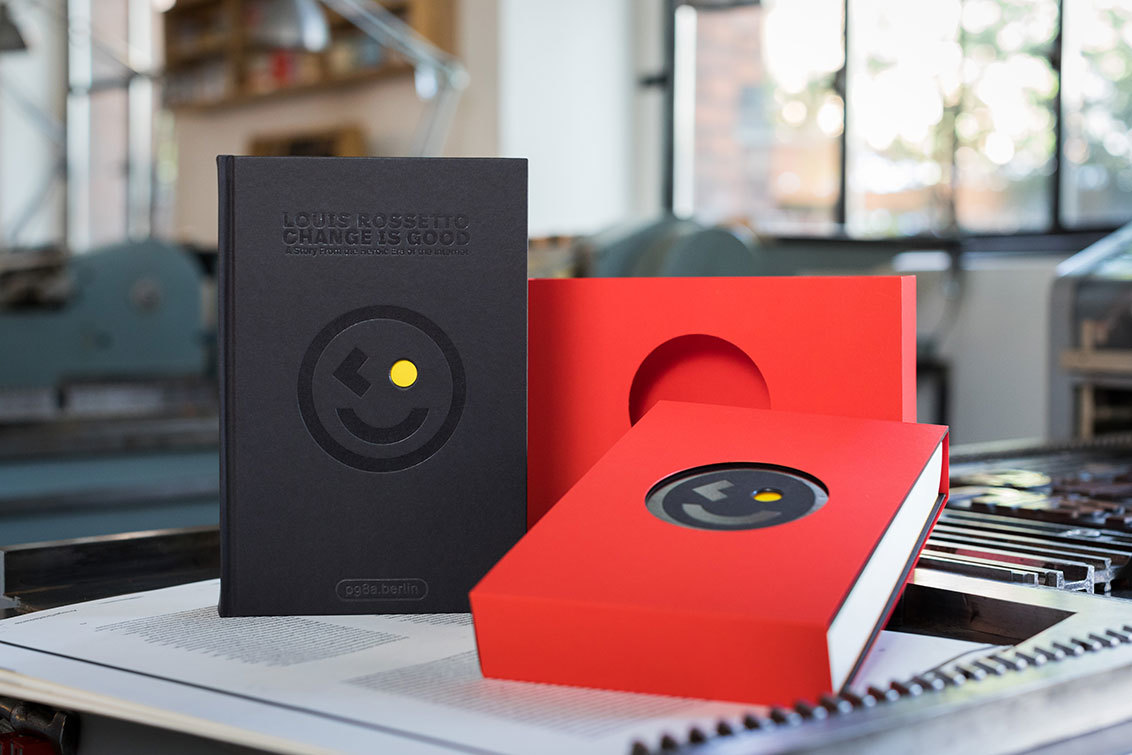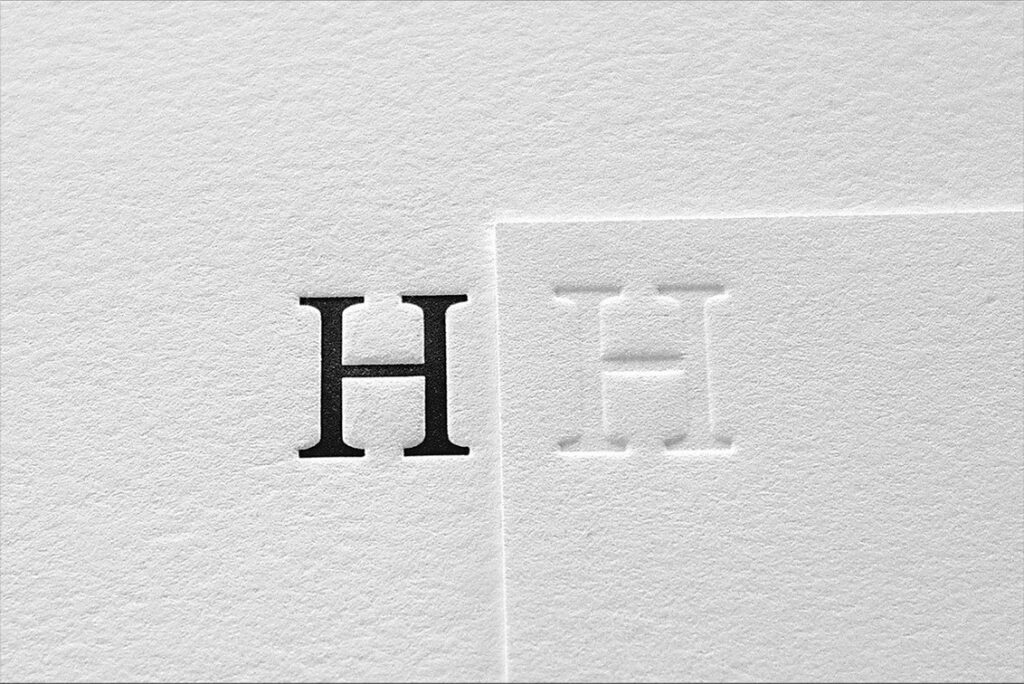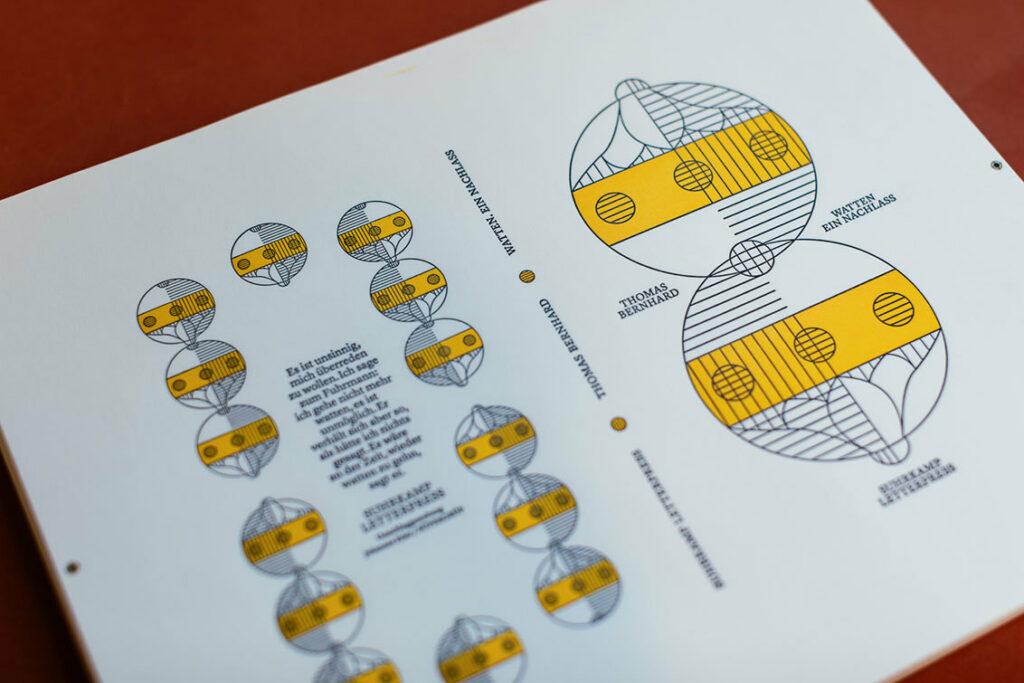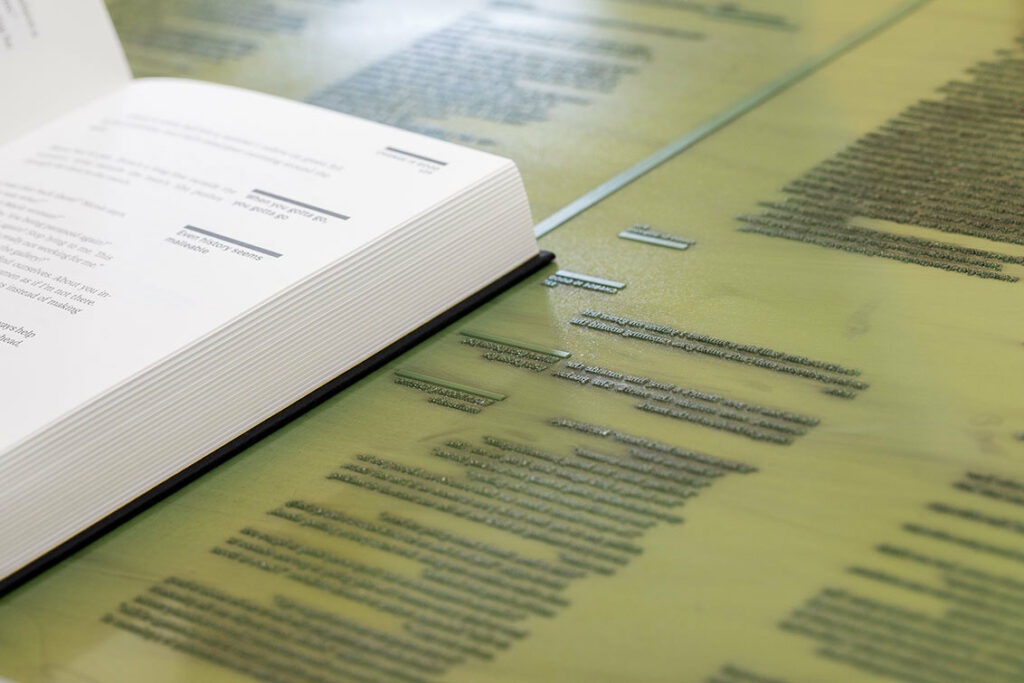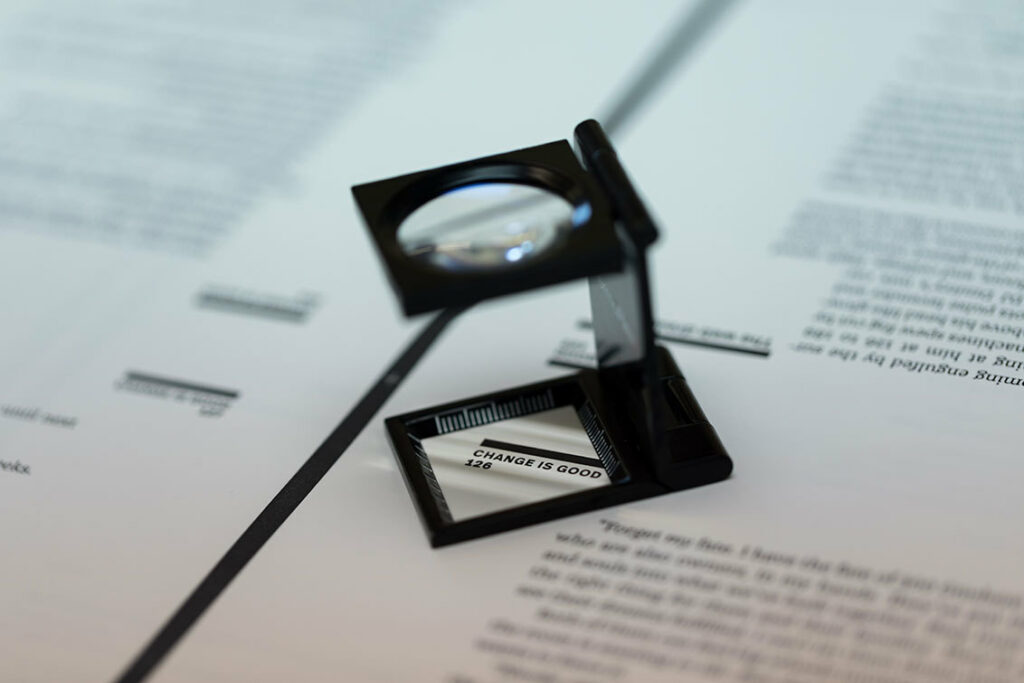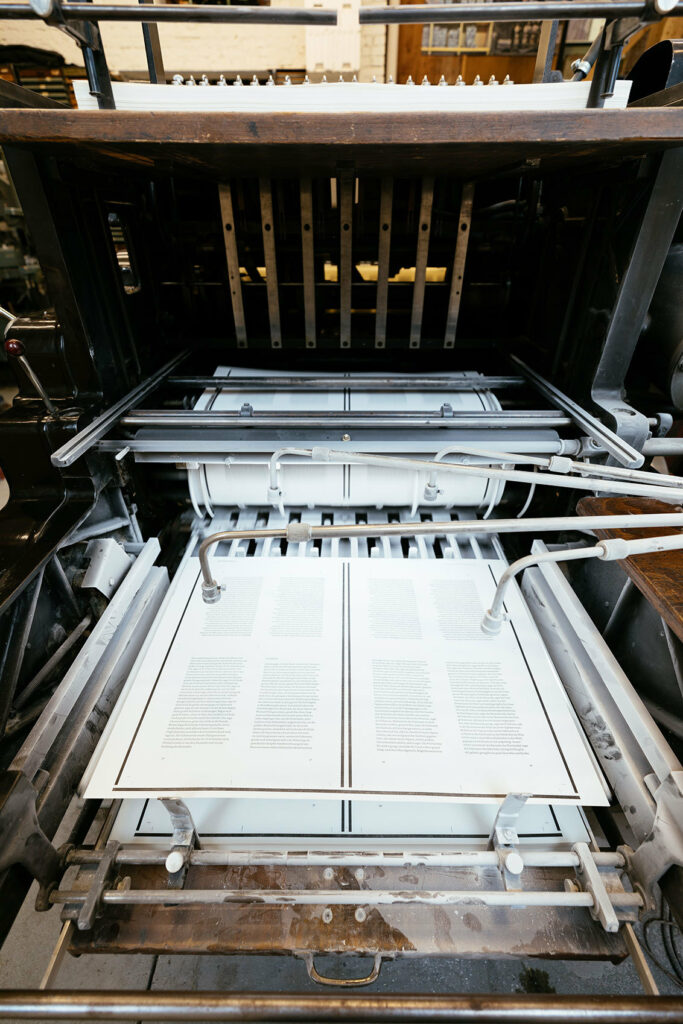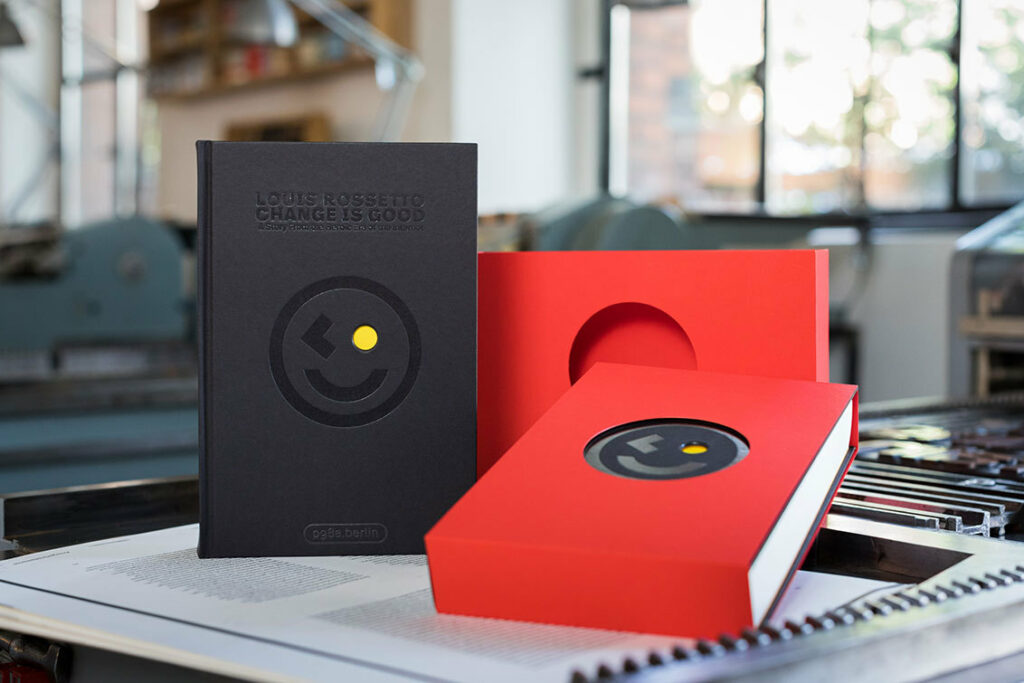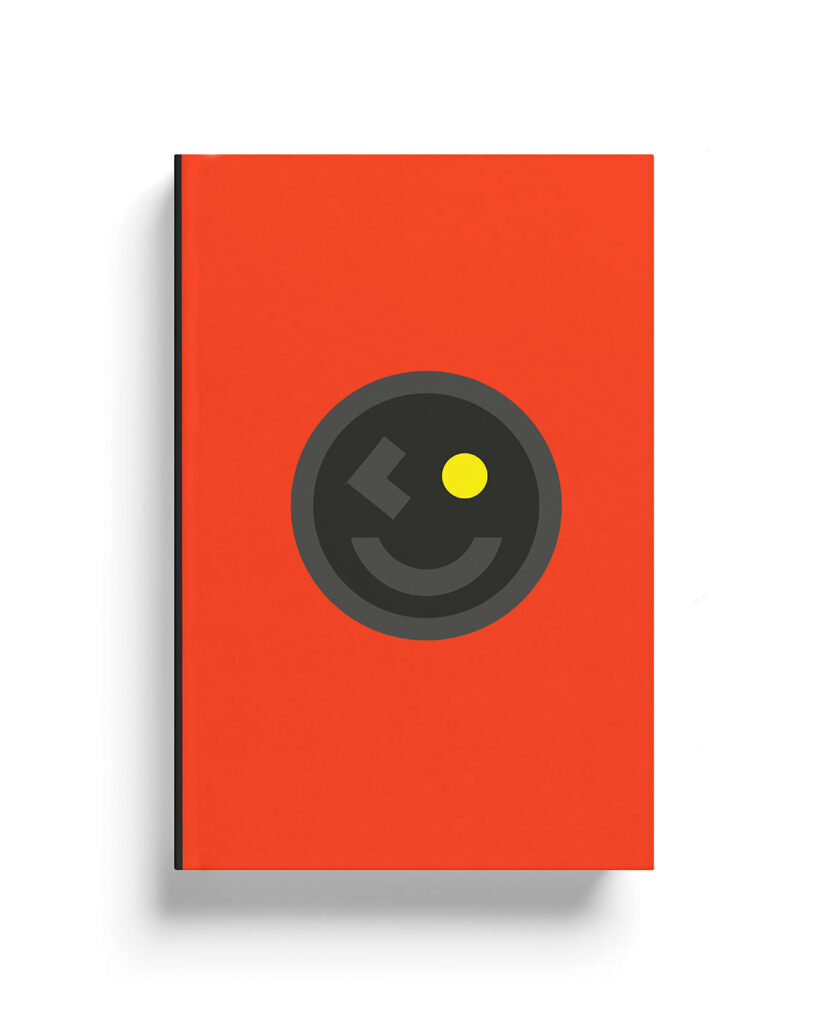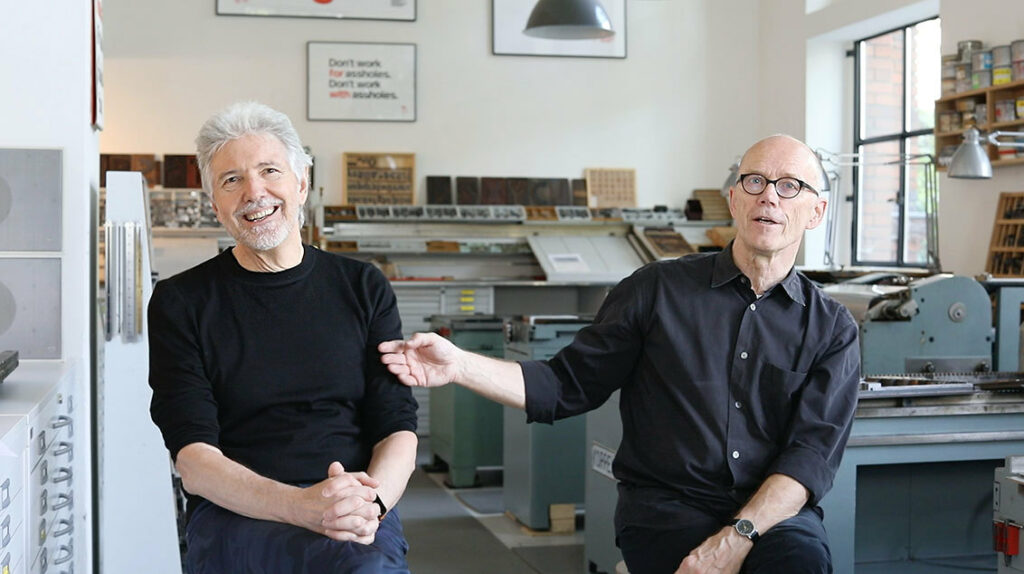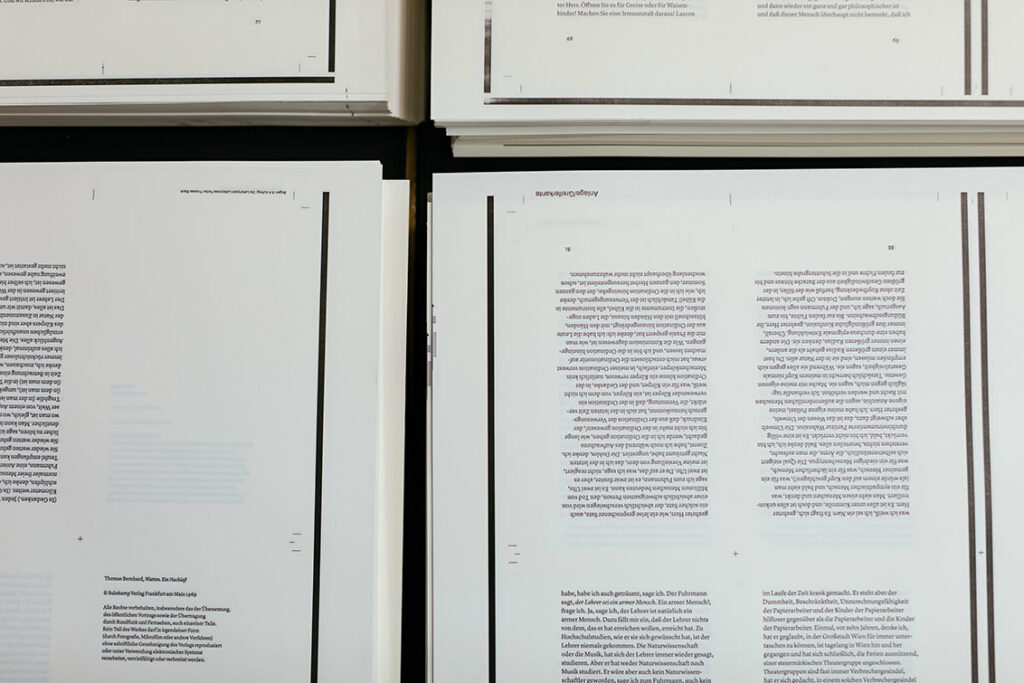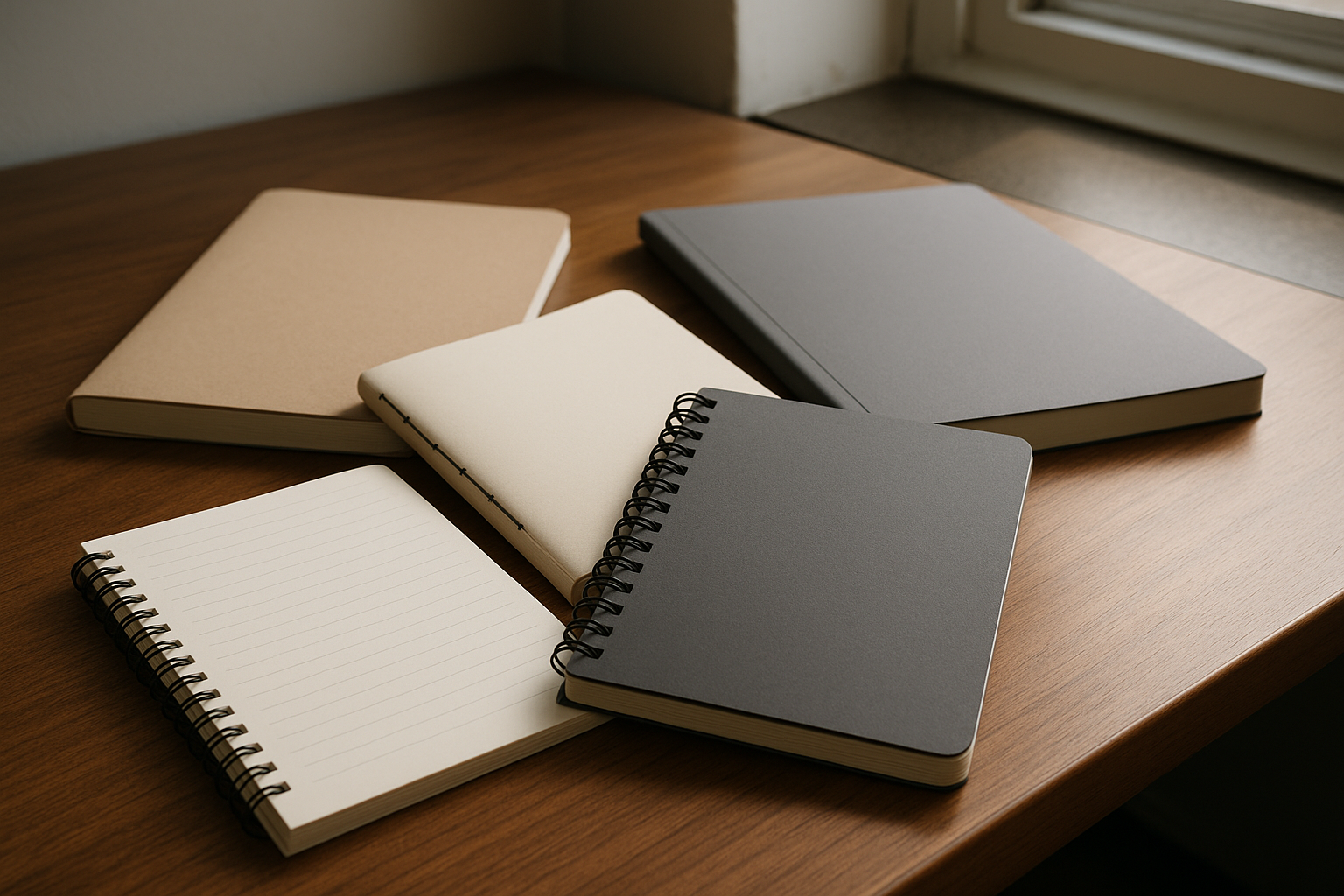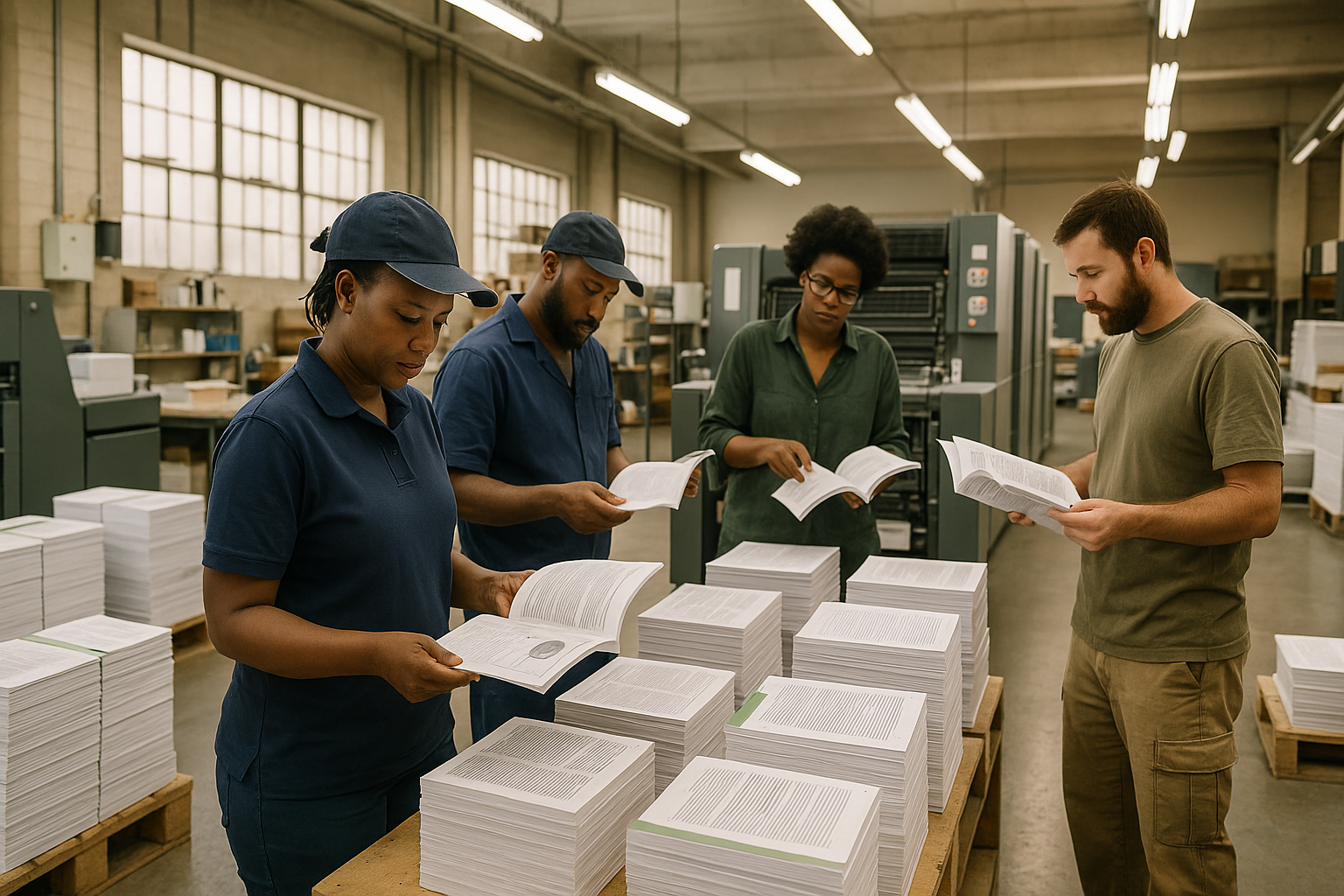How Erik Spiekermann came to reinvent the printing process
After a career as one of the world’s best-known graphic designers, Erik Spiekermann has returned to a teenage hobby and, almost by accident, ended up reinventing the printing process. His newly developed technique is coined “post-digital printing” and combines a traditional letterpress with laser cut, polymer, metal-backed plates, which allows designers to bring their work direct-to-plate. The results are prints with a much higher quality than letterpress and offset, with dark black ink, a tactile quality and a satisfying sharpness.
“What we’ve done is take a couple of different technologies and put them together,” Erik explains on a visit to the It’s Nice That studio. “We have a few Heidelbergs from the 20s and 50s, and flexography plates, usually only used for packaging. Then we go from computer to plate, we laser cut the plates, so there’s no negative involved. It’s taken years to get sorted and it’s got bits of pipe coming out, and string and sellotape, we basically hacked it to make it work and nobody knows why, but it does! Also the normal inks don’t work, so we have a guy in east Germany who makes a can at a time, probably in his kitchen.”
Erik is bringing letterpress back to being an industrial process. The revival of letterpress is “artisanal” he says. “It’s cute, but you wouldn’t want to print more than a few hundred of anything. We have large plates that are 52 × 72 centimetres, which no one’s done before, and we could print 10,000 books if we wanted to.” This new process, he believes, is “the nicest way to put black text on paper”.
His printing studio, called p98a, and Die Lettertypen studio (a printers for which Erik runs the commercial operation), has already begun to print books: a series of seven for German publisher Suhrkamp – coming out at upcoming Frankfurt and Leipzig book fairs – with covers designed by him and the other Süpergrüp designers (Mirko Borsche, Johannes Erler, Lars Harmsen, Sarah Illenberger, Eike König and Mario Lombardo). He’s also just collaborated with old friend Louis Rossetto, co-founder of Wired magazine, to design and print a collector’s edition of his new book Change is Good a novel about the start of the digital revolution. It launched 15 August on Kickstarter and within 24 hours had tripled its funding target.
“It’s ironic that a book about the beginning of the digital age will now be printed in an analogue method, that irony hasn’t escaped anybody,” Erik jokes in his dry manner. “We do want to make more books but I don’t want it to become commercial, really. I’d love graphic designers to come over and use the press experimentally.”
How Erik came to do this is an incredible, life-long story. As a teenager in Berlin in the 1960s, before studying art history and training as a typesetter, he became obsessed with collecting old printing presses. “People were literally chucking their old printing presses out the window, so I got an old lorry from the post office and went around collecting them. Space was cheap so I had a big warehouse for one mark per square metre, and kept them in there. I became known as that guy who collects printing presses, so people started phoning me up to give their old presses to me. Me and my friends would buy a crate of beer, go around and move five tonnes-worth of printing equipment. We were young and dumb with more muscles than brain. Ignorance was bliss.”
Then when Erik and his wife and child moved to London in 1977, he brought the entire collection with him on an articulated lorry. He hired a railway arch near Ladbroke Grove to store it, went on holiday, and when he returned the place had burned down. “There was nothing left but a cone of lead three feet tall. I’d wanted to become a letterpress printer, work for artists… but somebody sends you a sign. I was either ahead of the times or way behind it, either way [that career path] was finished. But it’s always been with me.”
Erik then went on to found MetaDesign and FontShop. “I became a big shot designer and had 200 employees and designed the Economist and what have you,” he says with a wry smile, “and now I’m officially retired. I’m out of the business, and I started getting into printing presses again. I bought one, then another one; through this letterpress revival there was an interest in it again. Within two years, I was suddenly known again as the fella who collects printing presses!”
Soon he had a studio opposite his old office Edenspiekermann with ten presses, and a warehouse next door filled with more, as well as countless typefaces. People would visit, as they still do, to print using woodblock and metal type on the old machines; meanwhile Erik started to ponder how he might stir the pot of the letterpress world, with his typically disruptive approach. “We started asking what letterpress means these days. It’s a good process and has desirable qualities, but it’s totally stupid for industrial purposes. I didn’t want to go into the bibliophile market where they reprint Shakespeare’s complete works to sell for 600 quid to collectors who never open them. That’s not my scene. I thought, how can we combine what I know about designing on a Macintosh, with the physical and emotional advantages of pressing into paper. That’s how it came about.”
He explains that, at 70, he’s old enough to remember the old processes, but young enough to have started work with computers. “I’m perfectly digital but I haven’t forgotten the analogue. I’m the in-between generation. If the next generation doesn’t learn it then a whole culture will be lost, so in a way it’s good to keep it going.” This isn’t “hipster” letterpress though, he says, which sees deep impressions on the paper made by the woodblock type – “a cardinal sin” in the typesetter’s book – but crisp and subtle lettering on the page, using nylon plates that don’t wear, on a magnetic foundation. The result, though, is one that has the physical aesthetic that people seem to be increasingly yearning for, tactility and “realness”. He compares the letterpress revival with the resurgent sales of vinyl: “Nobody ever throws away a book. Why is that? We chuck away magazines and newspapers, but we have an emotional relationship with books.”
Seeming to take joy from the adhoc, messy, unpredictable nature of the inventing process, Erik talks of visiting engineers and printers who said it couldn’t be done, before finding “hackers in Hanover” who made the platemaker. Describing the machine, he calls it an “unscientific and total Mickey Mouse outfit”, with which Erik and his team are still messing around trying to perfect the process, for example controlling the dust on the surface with vacuums, and learning to work with a clunky, ancient, but compelling piece of machinery. They’ve gone through a few hundred plates and printed complete books that got binned, iterating to fine tune the pressure of the press, the alignment, everything.
“It’s trial and error. People call it a revolution but it’s just hacking basically. I remember when we first started it up no one wanted to press the button because we worried it might explode, we were in the corner covering our eyes!” he laughs.
“We’re not luddites – we have old machines and the only practical way to use them is to use a modern front-end. From then on, it’s like the old days, rubber rollers, greasy ink and paper, and a machine that turns the shit around. There’s no fixing pins, no registration, you throw the plate in the machine and it sits there and you print five or six plates a day. It’s such an old machine, it’s like an installation, scary and huge but incredible, but it works.”
SOURCE: https://www.itsnicethat.com/features/erik-spiekermann-reinvents-letterpress-printing-p98a-graphic-design-210817?utm_source=dailyemail&utm_medium=email&utm_campaign=intemail
#LetterPress
#Printing
#ErikSpiekermann
#GraphicDesign
